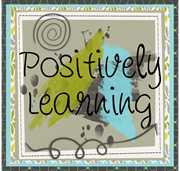Click the images below to check out this weeks hosts' blog posts. These posts have some great ideas and helpful freebies.
There are those kiddos out there who will learn no matter what you put out there. They can easily tap into their metacognition (thinking about thinking) and readily use it throughout the day and in a number of subject areas. But what about those kids who struggle to do this? Maybe they are your ELL kiddos or the kiddos who didn't get a strong background in literacy before they joined you in kindergarten. How can we help them?
Debbie outlines three things we can do as teachers to help "support and promote student thinking."
1. Putting our thinking on display.
2. The intentional use of language.
3. Make thinking visible, public, and permanent.
When I was reading this chapter, I thought: close reading! This is such a powerful way to put your thinking on display. I am a newbie to close reading. I just started doing it this year, but whoa, what a difference it made. I found that one of the best ways to reach all of my students was to slow down, focus on one book, and put my thinking on display both verbally and visibly through anchor charts. This chart took us a week to complete and there was a lot of modeling on my part. However, I noticed that the quality of our questions improved throughout the week and then in the future.
Check out this post Tara from Little Minds at Work wrote about close reading. She is a wealth of knowledge on the subject!
One of my favorite ways to encourage my students to think is to build a positive and collaborative learning environment. When we teach our students how to listen and learn from their peers, we can also teach them how to encourage and help each other. In the beginning, I model this behavior for them. The kids think it is fun to be a part of the lesson. When we as teachers, notice and name thoughtful language and positive behavior, our students learn how to do that as well. After a lot of modeling, I encourage my students to help each other out throughout the day. I "listen in" to their conversations. For some students, this comes naturally. But for others it takes some training, repeated practice, and time.
It seems as though I am always saying:
"What do you think?"
"Can you tell me more about that?"
"That is such a great idea. Will you share it with your friends?"
Debbie gives us so many great words and phrases to use in the classroom with our students. I made a reference sheet for myself and want to share it with you! Click on the picture below to grab it.
See you next week!









